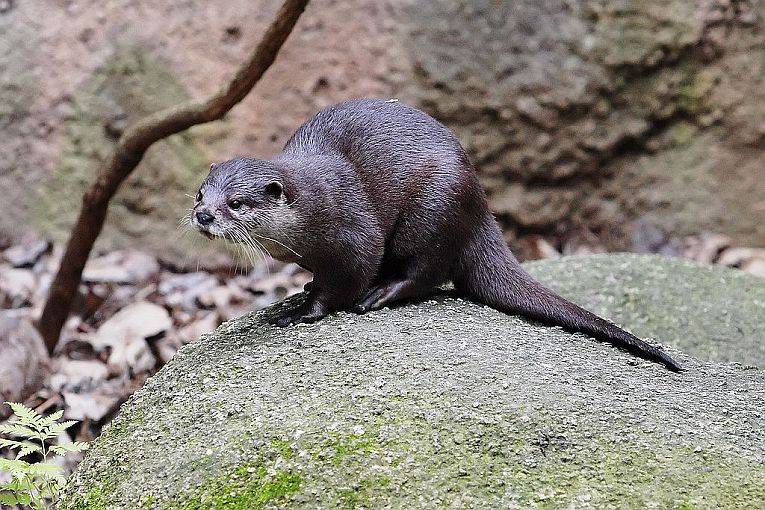The human species knows all about adapting information and social learning, having evolved throughout their history by adopting novel techniques in new environments. How many other organisms can use information in this way? The otters may well be great performers in the intelligence stakes but can they use social learning strategies in cooperative situations or in solo foraging?
Zosia Ladds, William Hoppitt and Neeltje J. Boogert of Anglia Ruskin University, Leeds and Exeter Universities looked at 2 species of otter present in British wildlife parks and zoos, which certainly saves on travel costs! One group were the large smooth-coated otter, who live in social groups of 4/5 and fish in coordinated hunts. 3 other locations provided the tiny short-clawed otter, who lives in mother-oriented groups of up to 15, foraging for crabs and shellfish individually.
Their paper appears today in Royal Society Open Science (which you can therefore read widely) as Social learning in otters.
The otters number 13 species - from the giant Amazon, Pteronura brasiliensis, which lives in great packs behaving like river wolves
to the foraging short-clawed otter, Aonyx cinereus, here, which is the smallest. The 2 Asian species used in the research are classed as Vulnerable in the IUCN status lists, which is probably why they are being bred in captivity so much.
The comparative experiments involved novel extractive tasks with the bait of pieces of fish, or a varied bait for the short-clawed otters. With several pieces of apparatus in the otter enclosures, animals had plenty of time to observe each other solving or failing the 6 separate problems. Each task involved a plastic bottle or jar with various closures. As the otter could move the task around, accurate observation and exact timing was needed to record the results.
With smooth coated otters, Lutrogale perspicillata, individuals did vary in their numbers of associations with each other, but the tasks were almost always solved by copying each other – a little like schoolchildren behaviour! Individual trial and error was rare as young otters especially jumped in after an older otter had solved the problem and copied the procedure accurately – almost like a teacher-student situation. However, the young otters had a much higher success rate than the old male, in both social and asocial tasks.
With short-clawed otters, there was a less than 50% success rate with one of the difficult tasks. Also, individuals solved the tasks, with strong evidence for an asocial model of learning in the data. In this species, parents and offspring were equally adept at problem-solving, though males again were slower.
The social learning research in otters has just begun with this paper, but with most wild species being almost impossible to study, such research on captive animals may be the only possibility with some species. The use of social learning in Lutrogale, the smooth coated, follows from the extended juvenile period up to 4 years old, which is twice as long as that in this Aonyx, short-clawed, species. Aonyx become independent much more quickly and therefore have less need for social learning. The experiments could have been skewed, however, as the youngest Aonyx was 4 years old at the time of the experiment, so truly young animals were excluded from the trials.
It’s possible now that otters and others could be better investigated instead of the usual candidates for advanced learning abilities of all types. Animals like these species, with a wide range of life history traits, could give insights into evolution in social learning strategies, plus their conservation could be enhanced by knowledge of their unique social ways.
Here is our Otters Tale
to help spread the word on our beleaguered but very popular riverine and marine mustelids.










